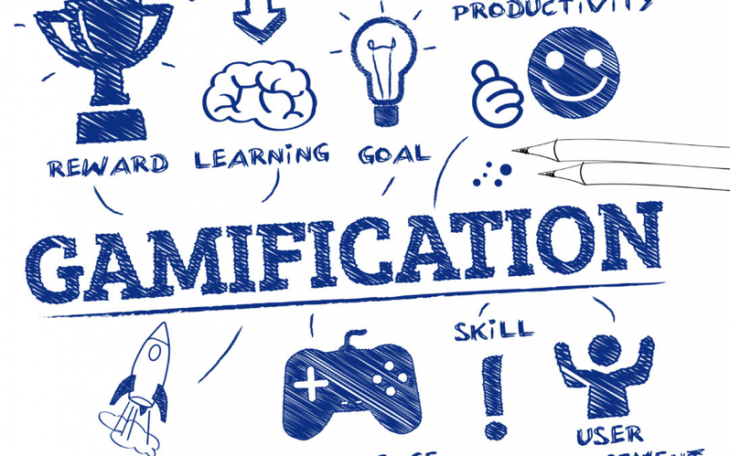(cover photo credit: Access Information)
Gamification is an exploding trend as more planners and organisers recognise how guest engagement factors into a lively and well-received event. Statistics also reveal more attendees actually prefer some sort of gamification experience. Furthermore, 40% of corporations indicated they would employ some form of gamification for improving business operations.
In this blog, you will learn everything there is to know about event gamification, along with the latest trends for incorporating games, getting attendees engaged and getting them talking about their experiences on social media.
Why Gamification Works
A look into neurology explains why gamification is so effective for driving active engagement. Most games created specifically for events utilise some sort of rewards-based system. This may include unlocking specials like digital trophies, avatar costumes, or hidden and hard-to-obtain items whenever players reach a certain level, reach a certain stage, or achieve some other in-game milestone.
The achievement is satisfying. When the brain is satisfied in this manner, it releases the hormone dopamine. This is the feel-good hormone that triggers a pleasuring and satisfactory sensation in the brain and this is why some games are so addictive; gamers want to continually advance in order to get more of that satisfaction resulting from their accomplishments. This pleasure principle is consistent with the theory outlined by famous psychologist B.F. Skinner. He was the man who proposed the conditional learning theory, where positive reinforcement is the catalyst for repeated desirable behaviour.
What Is Gamification?
Gamification can be divided into two types: offline and digital.
Offline Gamification
Offline games have been around for decades. Examples include carnival-like games that are popular in tradeshow booths, such as prize wheels, bean bag toss, and Plinko. Even icebreakers used for kickstarting events can be forms of gamification – the human knot is a popular icebreaker that encourages guest interaction.
Digital Gamification
Photo credit: Big Tree and Koala
Digital gamification is what comes to mind nowadays. Here, you have plenty of choices that can mainly be divided into two categories: games via downloadable apps and in-venue kiosks.
An event gaming app can be a simple game, perhaps a puzzle game or a game similar to a classic title such as Alien Invaders or Pac-Man. The main point is that the game allows some sort of continual advancement or levelling up to retain interest among players. High scores and other achievements may also be shareable on social media.
A kiosk game is more arcade-like and is an actual console or booth at the event venue that attendees can interact with, either through a gaming controller, touchscreen, or motion sensor.
This post will focus more on online and digital gamification since that is the current trend in the age of big data. We’ll show some examples of how other companies have utilised digital gamification with great results.
Real World Gamification Examples
If you’re still sceptical about event gaming, here are some real-life scenarios of actual companies using gamification.
Case #1: YourMembership
Photo credit: Quick Mobile
YourMembership is a cloud-based software service. For one of its conferences, Xperience, it held a Harry Potter themed event at Disneyworld in Florida. Part of the event included a game known as TriWizard, which attendees can download as an app on their personal devices. Guests were given a number of objectives for which they were awarded points on successful completion.
This included completing certain objectives favourable to YourMembership, such as visiting a certain booth at Xperience and scanning a QR code. There was also a pre-event challenge allowing participants to rack up points before the event. To boost engagement, participants were also grouped into teams, so they can rack up points for themselves as well as contribute to a greater collective.
The results? 88% of attendees downloaded the app, and 11,872 more game points were awarded compared to last year’s gamification efforts.
Case #2: Digital Signage Expo
Digital Signage Expo is an annual event that showcases the latest signage and kiosk systems for events, conferences, and showrooms. For its 2015 event, attendees registered using a digital touchscreen system. After their information was logged, they could choose to participate in a kiosk game known as Slackline. This was a balancing game where participants stood on a tightrope and aimed to maintain their balance for as long as possible.
The kiosk kept a record of attendee scores and the participant with the highest time was awarded an iPad. You can bet there was a high participation rate. After all, who wouldn’t want a free iPad valued at several hundred dollars?
Watch this video of the Slackline game in action.
Case #3: Incentive Research Foundation
Incentive Research Foundation is a non-profit organisation that funds research in the global incentive industry. Its method of gamification was more out-of-the-box, hence why it deserves a mention – methods that deviate from the norm are usually a plus.
For IRF’s Annual Invitational, its gamification included a simple downloadable app. Instead of being awarded points, players were awarded badges for completing certain “happiness” actions. Objective examples included:
• Sending a complimentary message to another attendee
• Writing about something they’re grateful for and submitting it via social media
• Taking a photo of a place somewhere in the venue that would suffice as a “happy place”
The objective promoted the event’s agendas about creating a more positive environment and global collaboration.
“The Result? Attendees on average spent a total of more than one hour on the app. 86% of attendees participated.”
How to Make the Most of Gamification
Photo credit: Turnaround
How can you best utilise gamification for optimal results? The above examples certainly provide a blueprint on how to go about the process. Here are some takeaways to help you reap the most from your gamification investment.
Social Media
Whatever form of gamification you use, it should involve social media in some shape or form. An easy way to do this includes showing the top scores. By doing this, you’re acknowledging top performers and giving them the well-deserved attention that will be seen by their friends and followers.
Furthermore, games can also require direct participation on certain social media sites – for example, taking a photo of a certain activity at the event and uploading it to your Instagram using the event hashtag. This way, gamers receive points for fulfilling the objective while your company gets publicity out of it.
Consider a Physical Prize
Digital points, badges, and trophies are fine, but a tangible reward is even better. This is exactly what the organisers of the Digital Signage Expo did with an iPad as a giveaway in case #2. If an expensive item like an iPad is out of your budget, you can always aim for something lower. Other prizes include swag items, such as promotional T-shirts, tote bags, and umbrellas.
Polling and Voting
Photo credit: CDN APP Center
Gamification doesn’t even necessarily have to be in the form of a game. A simple poll or survey asking for attendee input is also a form of gamification. Polling can also be incorporated as part of an existing game. Perhaps you can reward an additional amount of points for completing the survey. If a gamification involves a contest, then the participants themselves can be the judge by voting for the best-submitted photo or post.
Pre-Event Gamification
Gamification can and should take place several days or even weeks before the event. This way, attendees are already engaged and invested by the time the event is around the corner. This can be a game that can be played up to a certain stage – players will have to attend the event to unlock the rest or be allowed to reach beyond a specific level threshold.
What NOT to Do in Gamification
There are also a few pitfalls regarding gamification that you should avoid. Steer clear of the following:
• Charging participants for any downloads or participation
• Creating a game with overly complex gameplay mechanics
• A game with no clear goal. Developers need to ask themselves the following – What is the end result for the company? Does playing the game encourage consumer loyalty? Does it increase participation on company social media channels?
• Giving away too many awards whether that be in the form of points or physical prizes. The more frequently and easily you give out rewards, the less players will value them
• A game that’s too repetitive. The game will likely span over the course of several weeks before and after the event. Does the game offer enough variety to keep players interested?
Is Your Event Gamified?
Gamification is a big investment, but it’s one with enormous payoff potential if you play the cards right. We encourage you to check out this post on event gamification at UE’s blog to learn everything you can about this exploding trend. The more you know, the more you can take advantage of gaming for eliciting attendee engagement.




